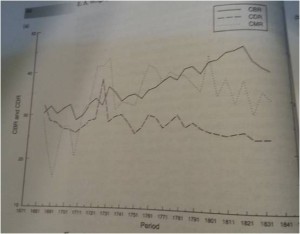Life at Cambridge Part II
This is a long overdue follow on from my previous post Life at Cambridge, and details my experience of the Cambridge Economics Tripos for 1st year Lent and Easter terms.
The Course
Lent
Microeconomics
This term we began by looking at Game Theory, where we cover the basics such as Nash Equilibrium, before moving on to more sophisticated games, looking at 3×3 matrices as well as 2×2. Simultaneous games are considered, along with Cournot and Bertrand games and models of business strategy and the notion of game theory is applied to matters such as externalities and public goods. There are also references to evaluation, such as how game theory isn’t the best model of real-life situations; for example in a finite game, theory tells us that if it pays to cheat in the last round (i.e. [...]

